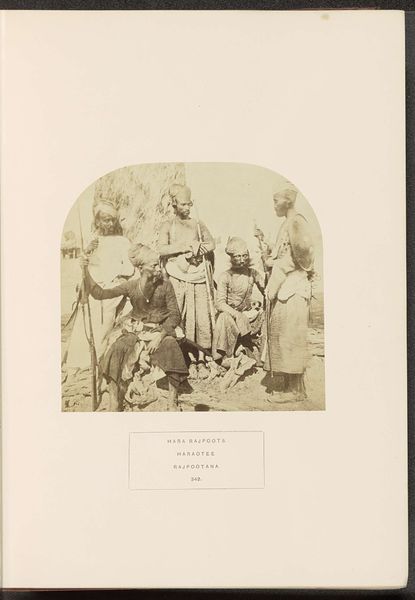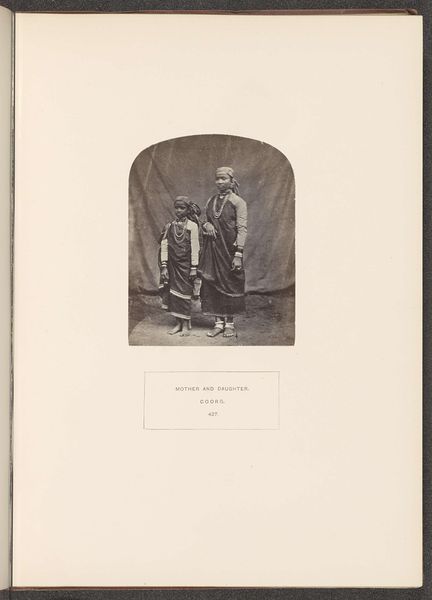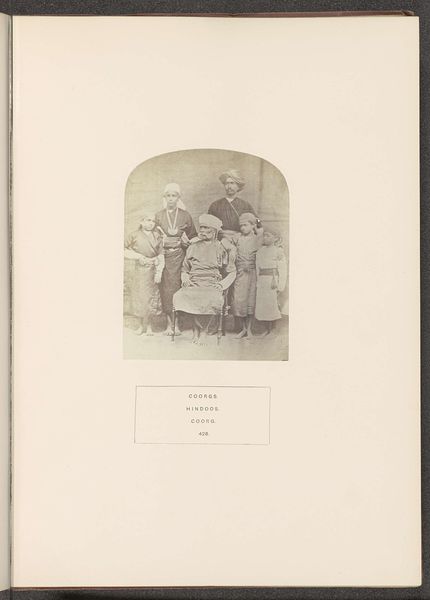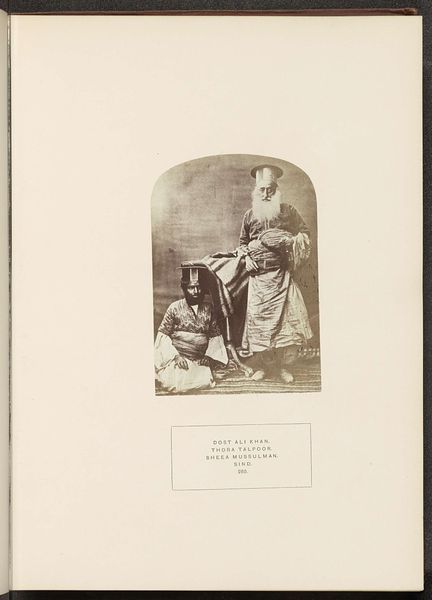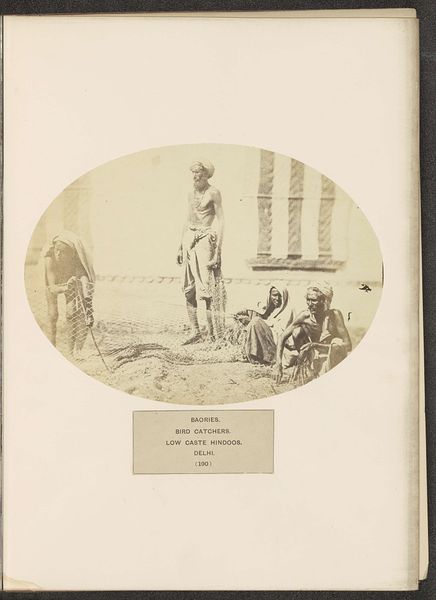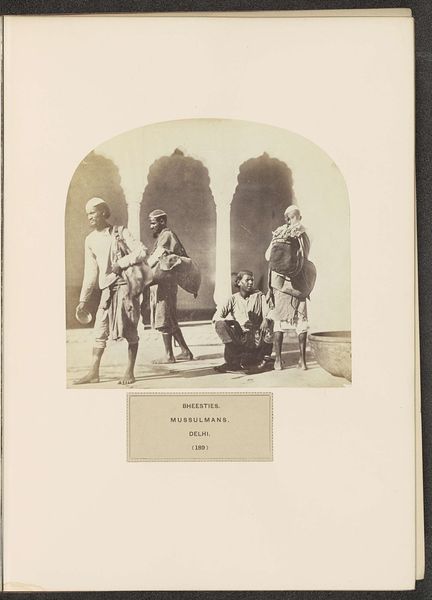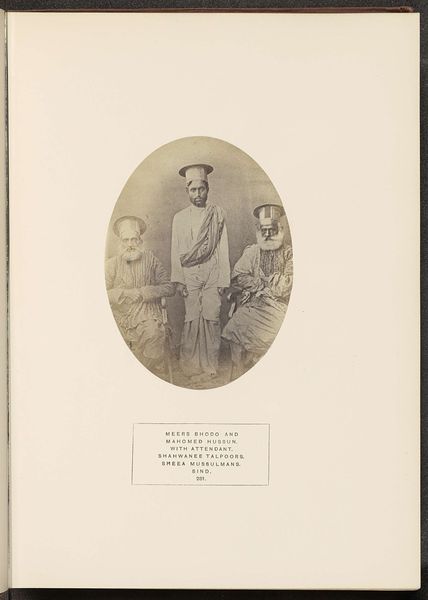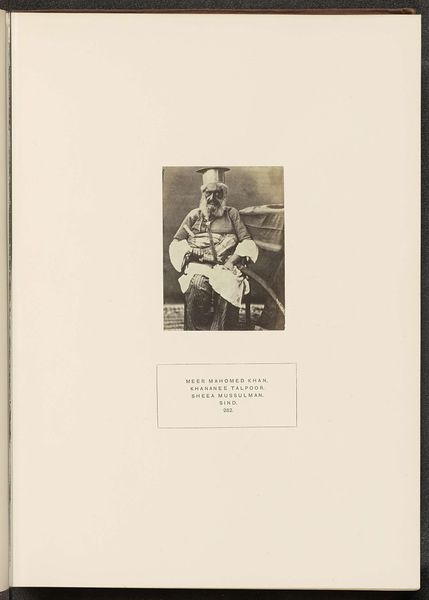
Portret van vier onbekende mannen van de Meena-stam met wapens before 1874
0:00
0:00
photography, albumen-print
#
photography
#
group-portraits
#
orientalism
#
albumen-print
Dimensions: height 197 mm, width 140 mm
Copyright: Rijks Museum: Open Domain
Curator: This albumen print, dating from before 1874, captures a fascinating group portrait by Eugene Clutterbuck Impey. Titled "Portret van vier onbekende mannen van de Meena-stam met wapens," it offers a glimpse into a specific community at a particular moment. Editor: Immediately, I’m struck by the way the men present themselves. There’s a directness in their gaze, but also a vulnerability—amplified by the softness of the photographic medium. They want to appear strong and fearsome, with their weaponry, but there is some uncertainty there. Curator: Indeed. The photograph is itself a material object imbued with cultural and historical weight. Albumen prints involved a complex chemical process, using egg whites to bind the photographic chemicals to the paper. This laborious process was part of the colonial project of documenting and classifying other cultures, essentially a process of appropriation. The very act of Impey taking this photograph is worth examining: who benefited, who controlled the means of representation? Editor: The weapons are compelling. Each spear or stick looks carefully hewn from what’s naturally available. I also note how only three men are visible—do you think the title may be in error? Maybe one figure remains intentionally obscure? This use of the spear as an overt symbol is interesting as this points to defense but also points to tradition and their ancestral lineage. Curator: That's a good point about the men and weapon, which prompts me to think more about how Impey controlled that representation, potentially arranging these props as if this was stagecraft to promote that very point of view of exotic indigeneity to an outside audience. Editor: Despite that potential staging, though, those faces hold such presence, such a depth of knowing. The expressions they hold and reveal transcend that potential Western gaze, or appropriation of visual knowledge that the British photographer may be trying to create for those at home who see this. Curator: Ultimately, by grappling with the means by which the image was constructed and disseminated, the viewer is in a much stronger position to look and ask questions that delve into colonialism and indigeneity, rather than merely be consumers of an appealing portrait of unknown tribal men in what was then called Rajputana. Editor: I agree. The picture now has so much to tell us about both who's in front of and behind the camera!
Comments
No comments
Be the first to comment and join the conversation on the ultimate creative platform.

